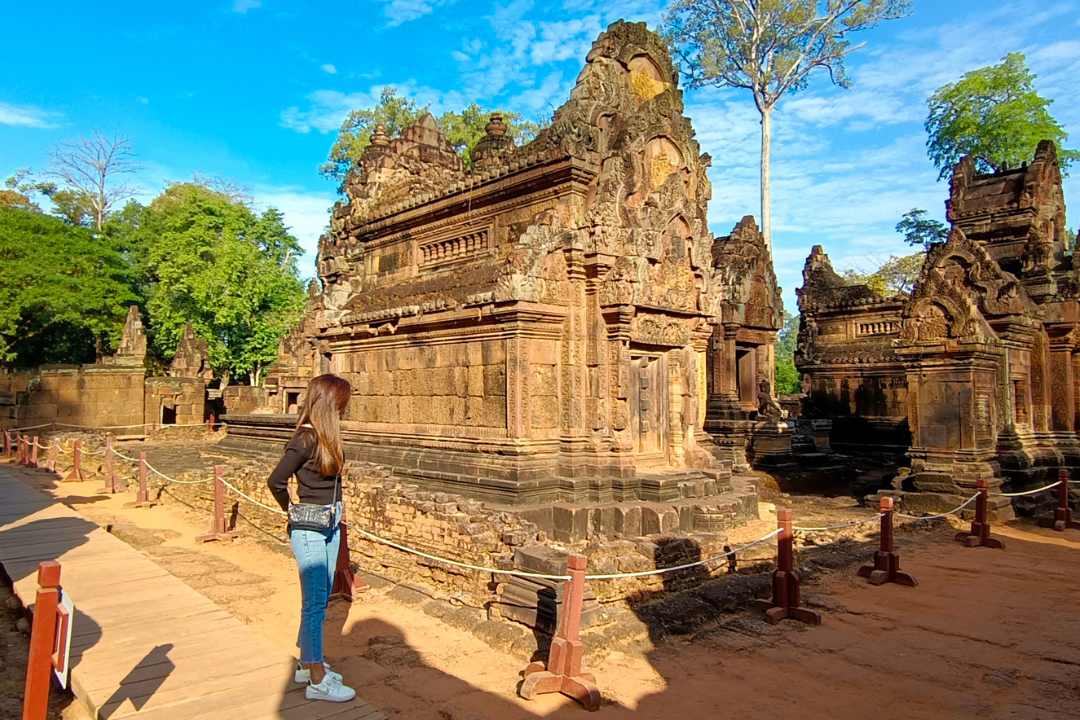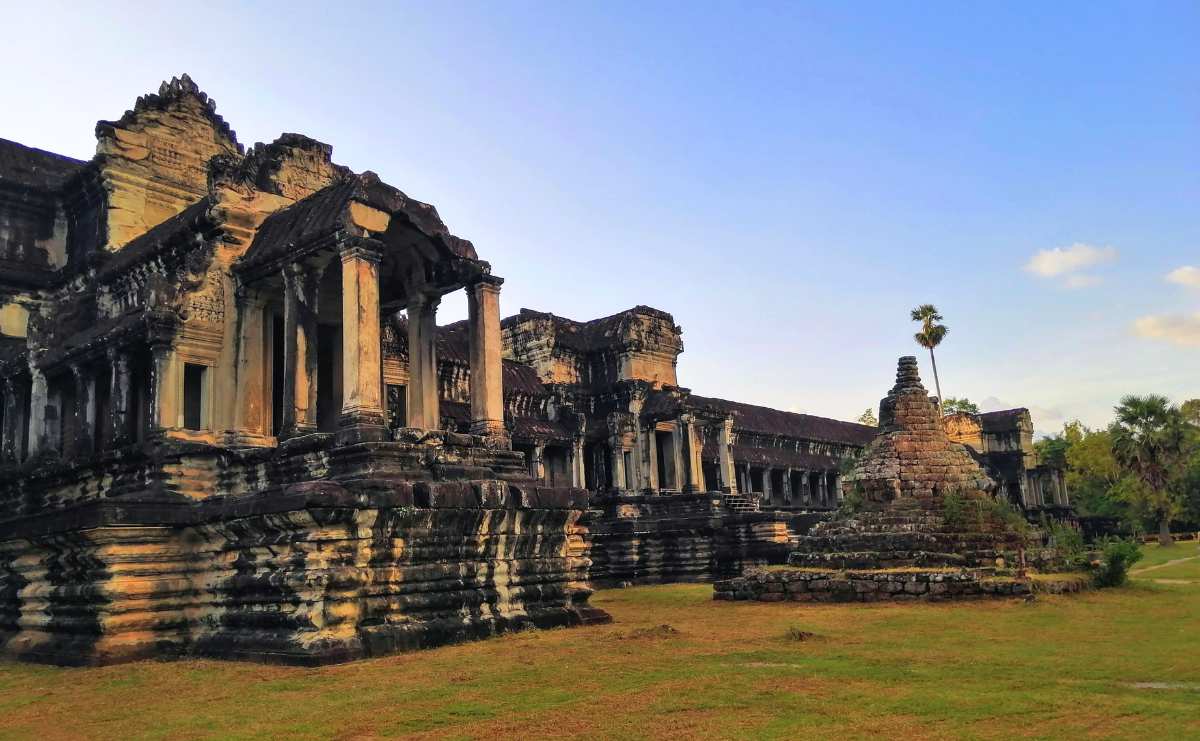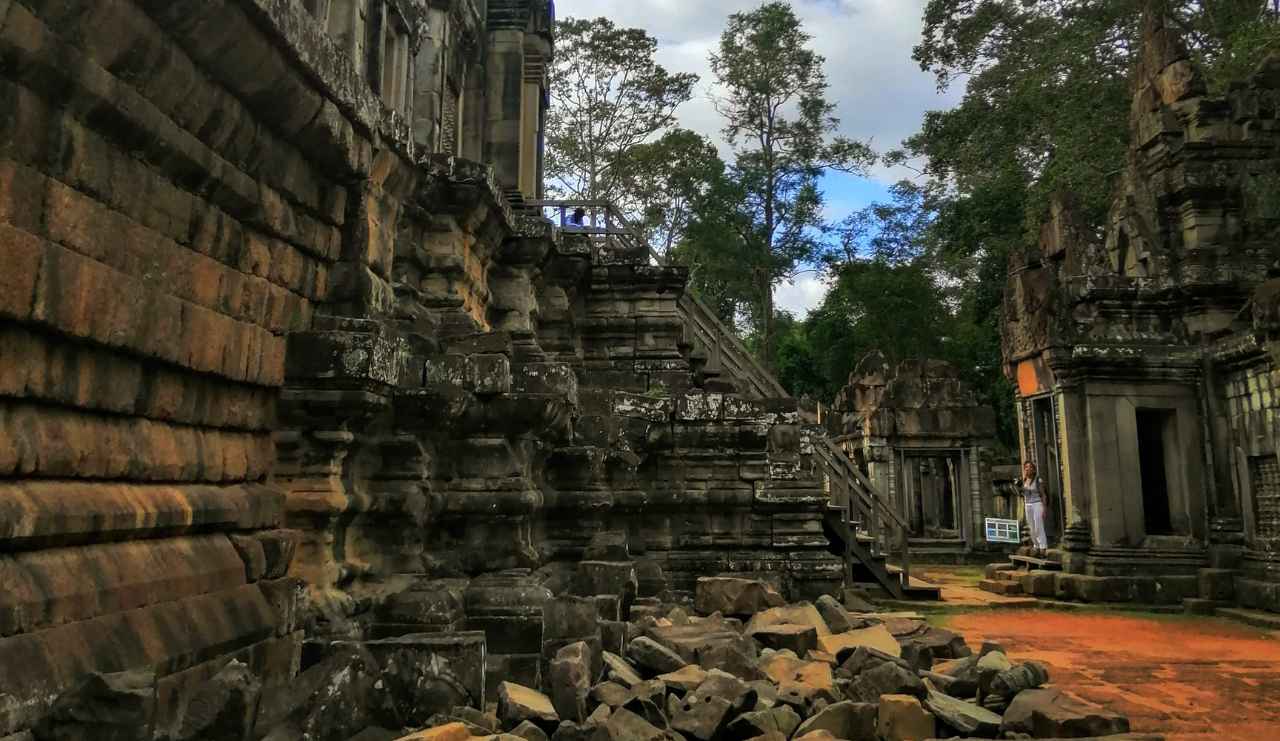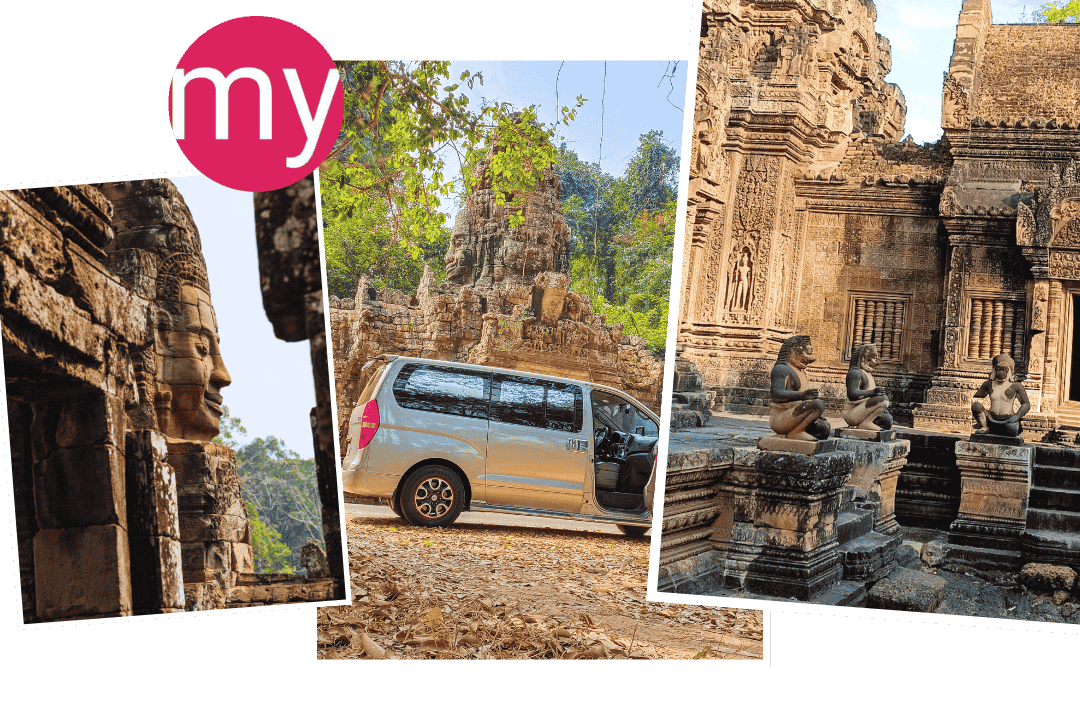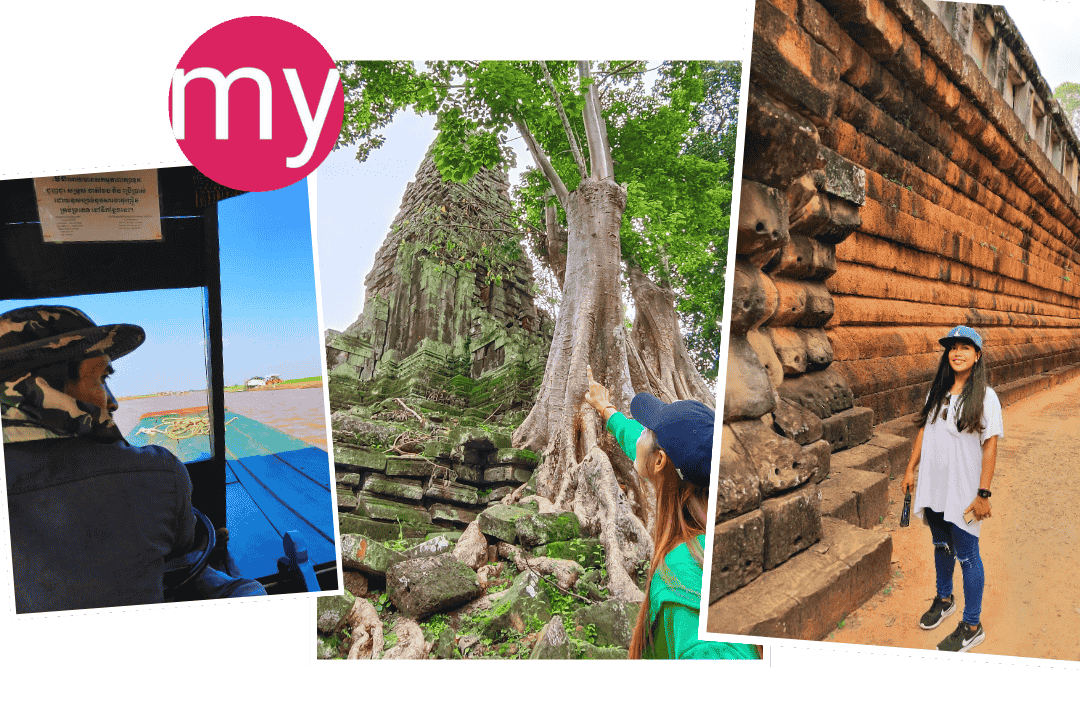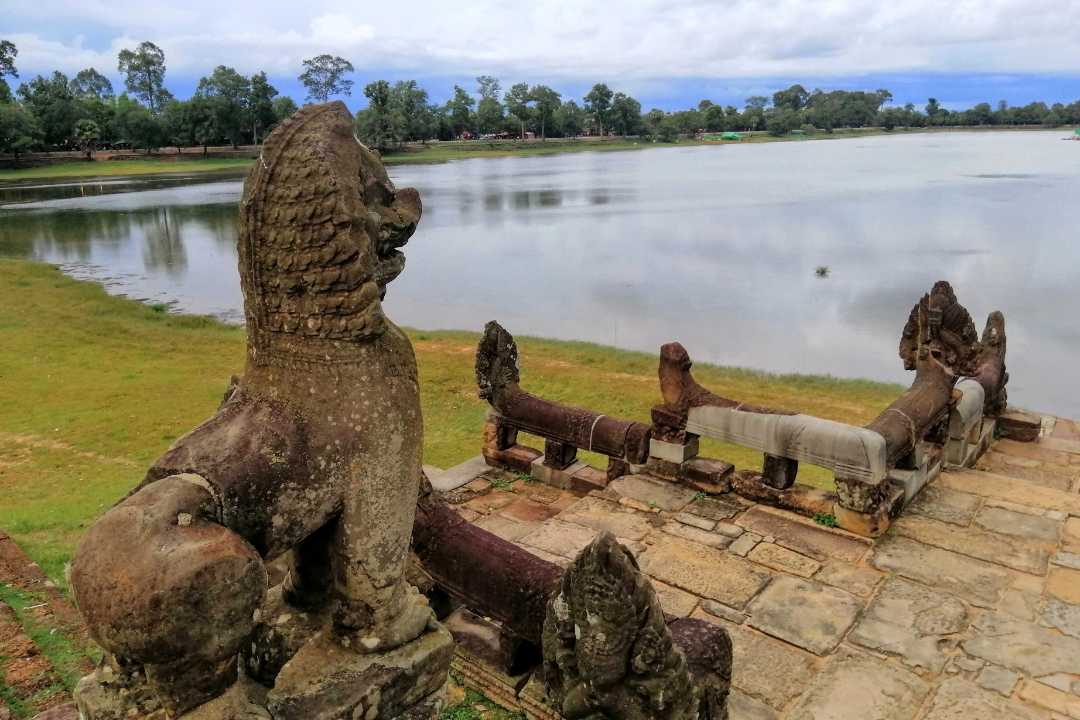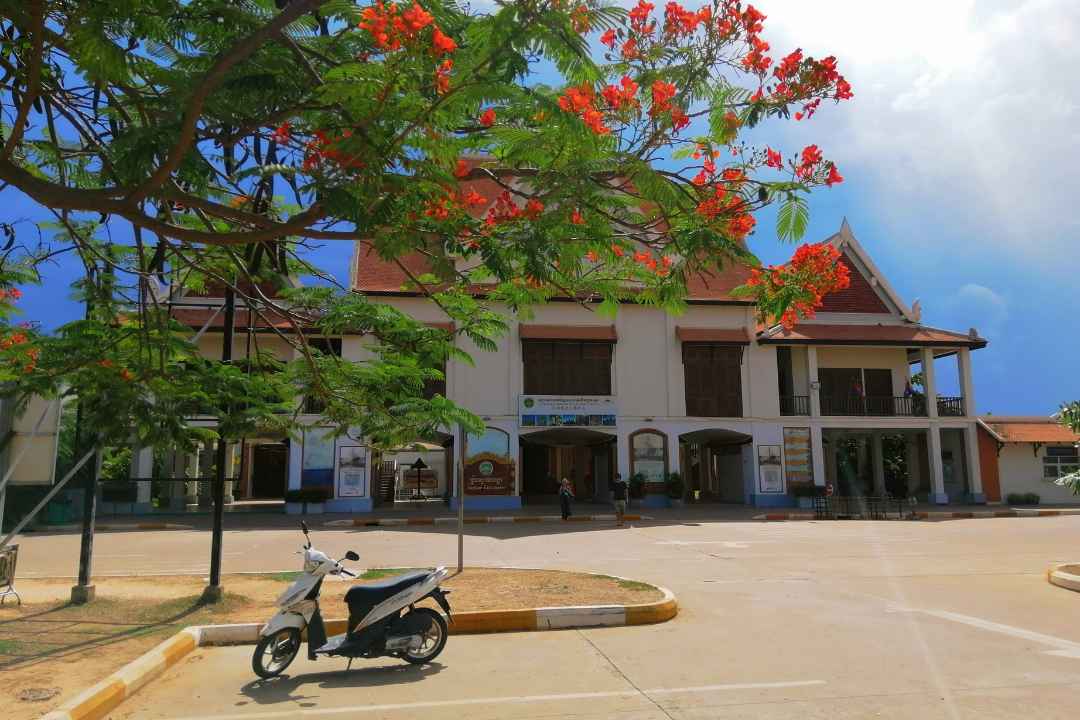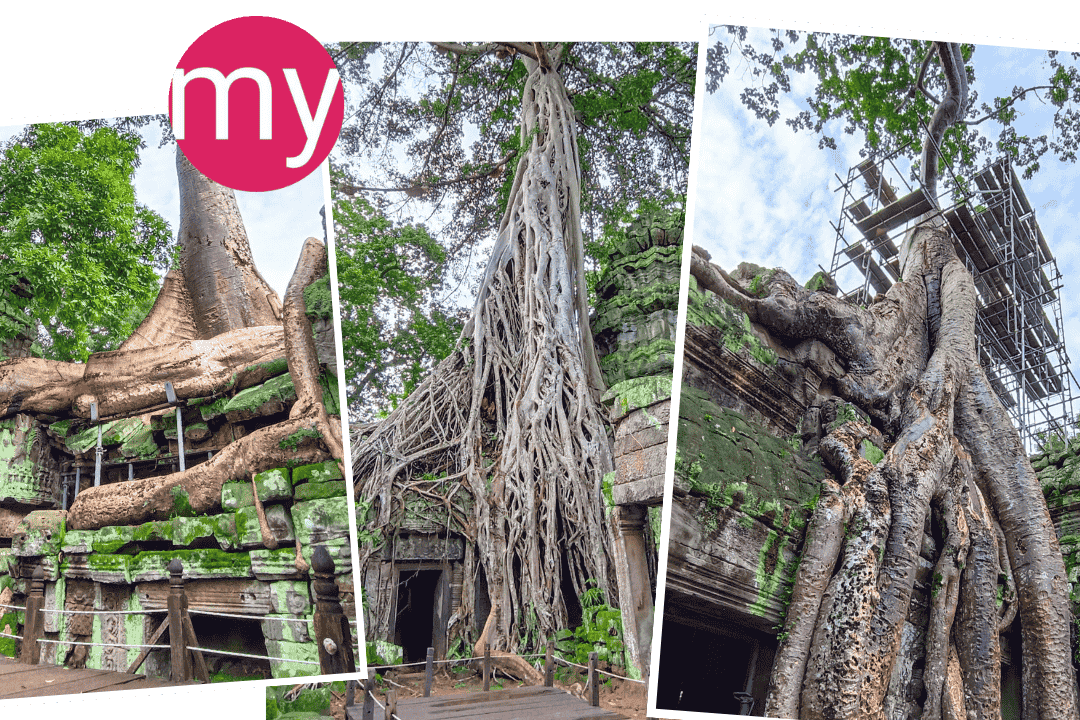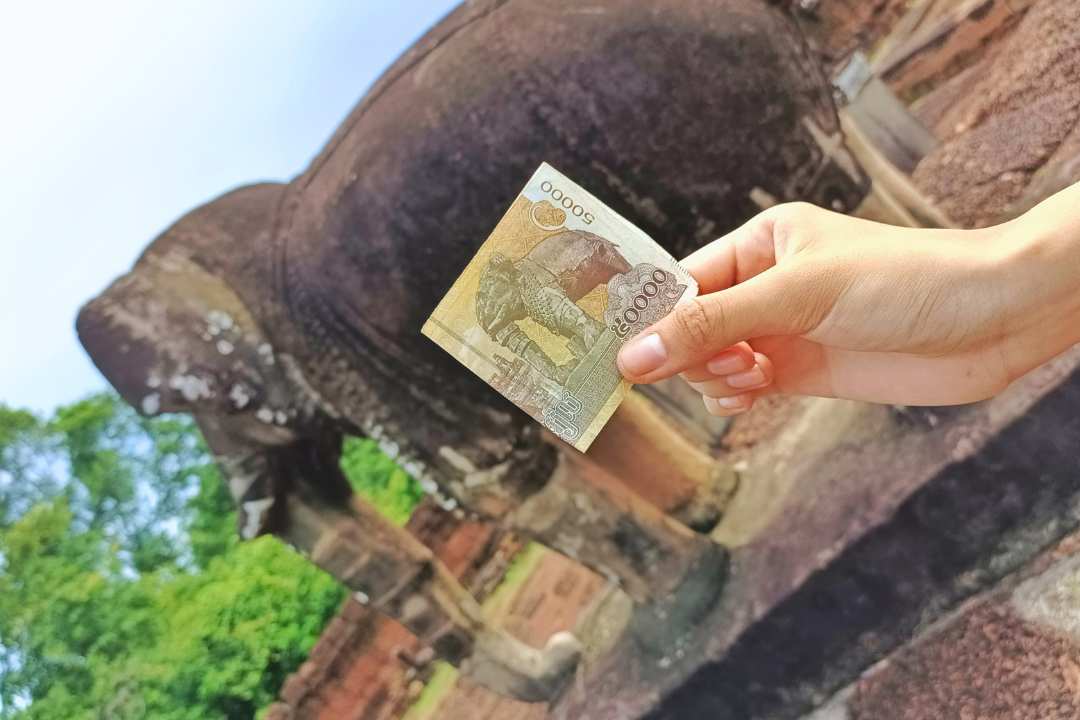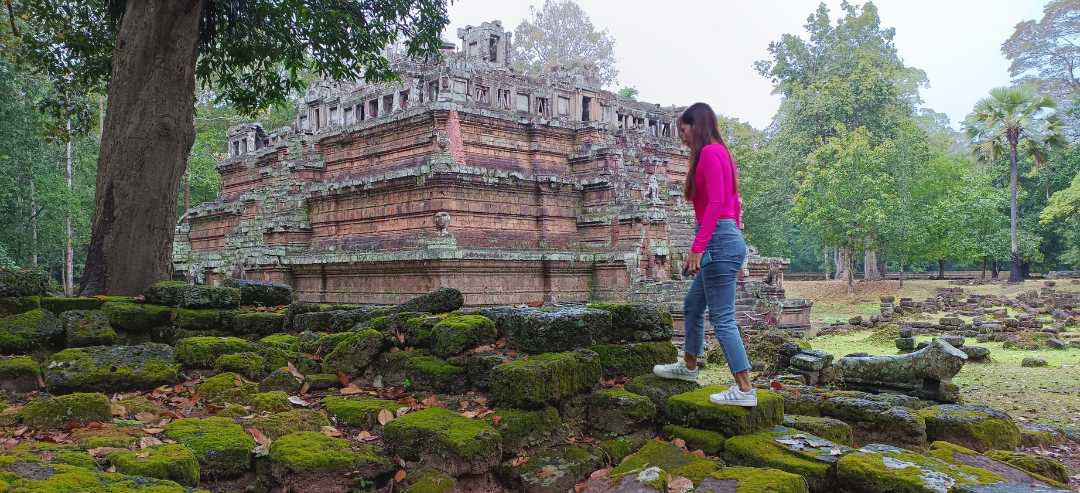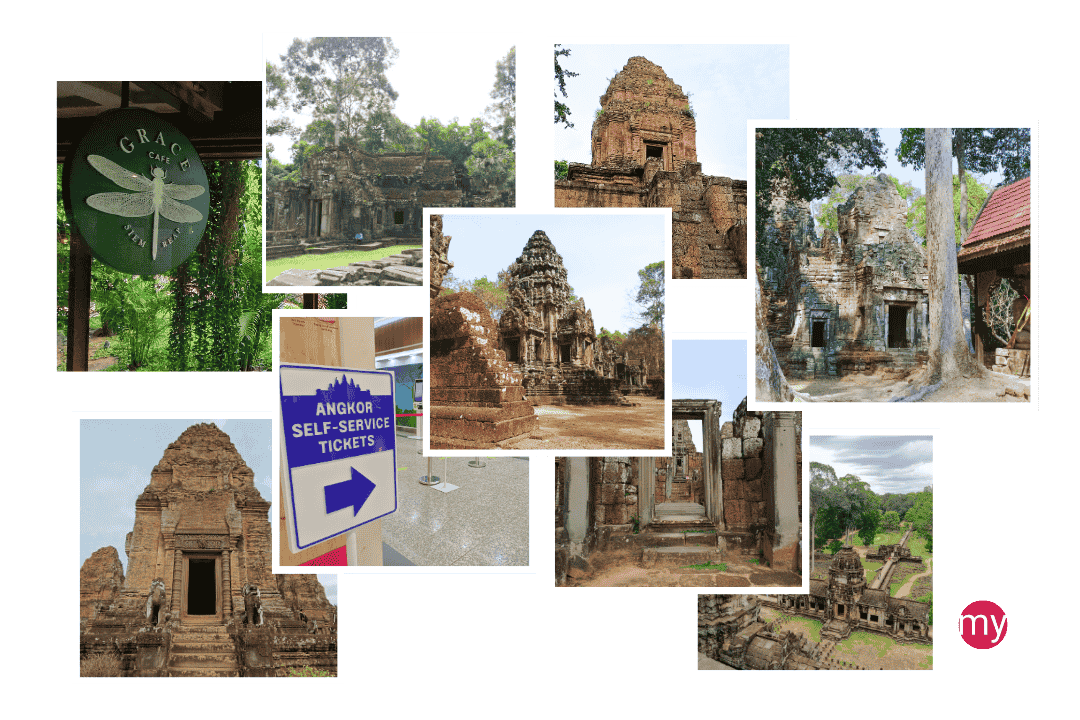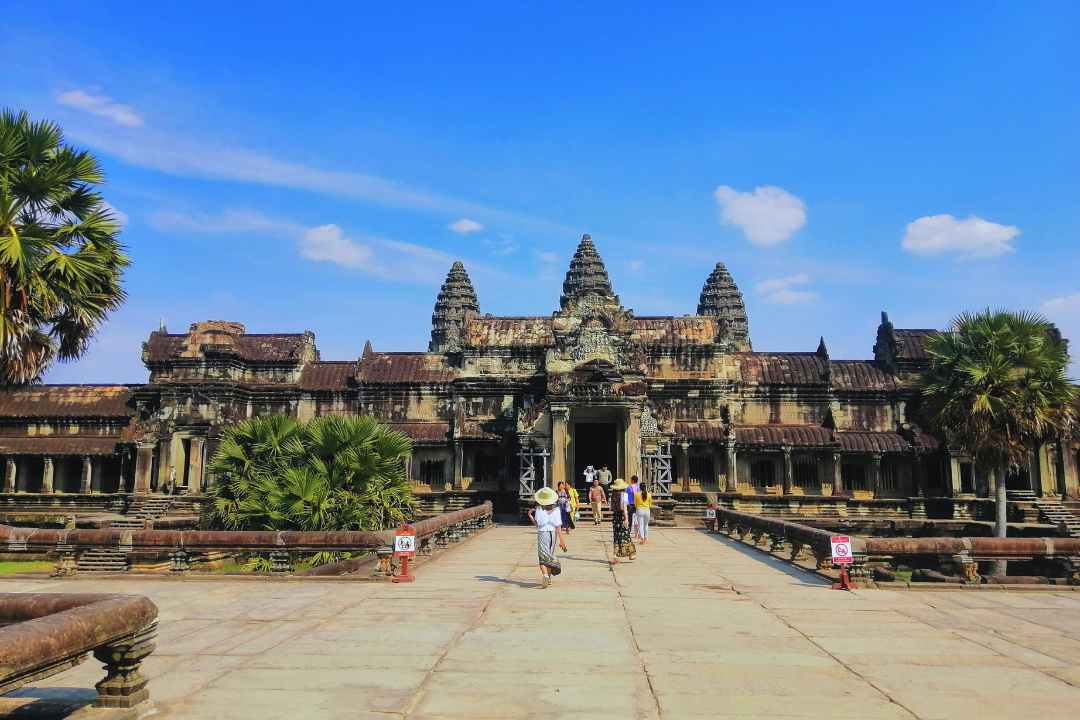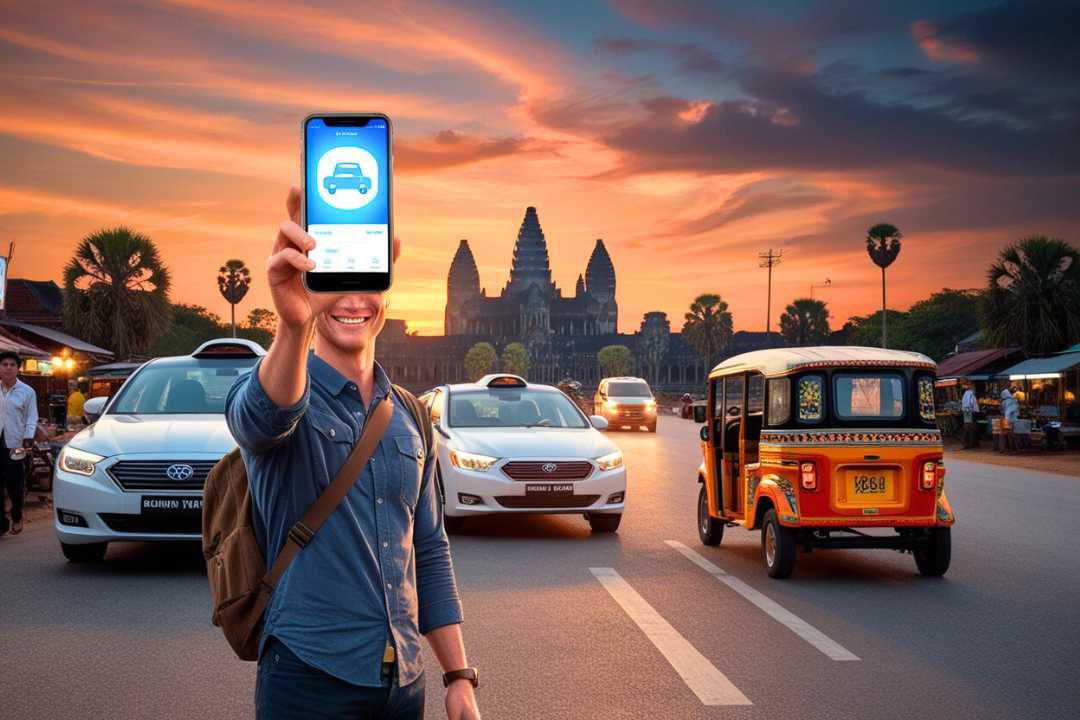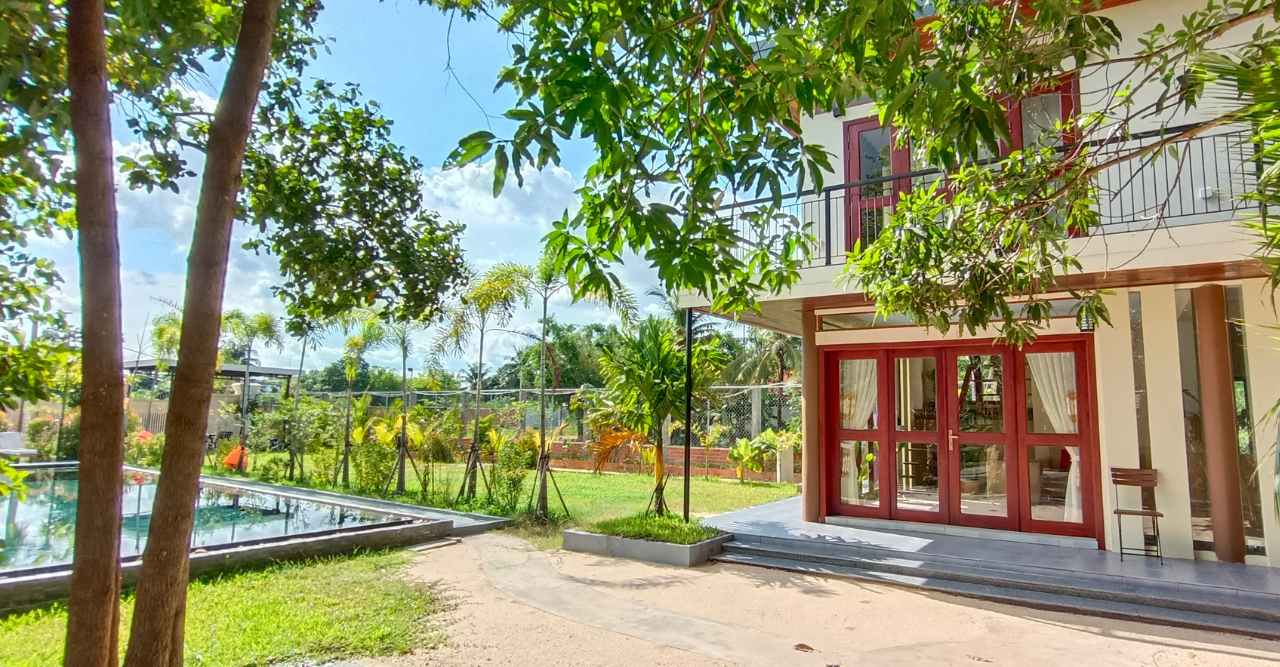Why Siem Reap Is the Secret Travel Jackpot Everyone’s Missing Out On
Skip the Overpriced Spots — Siem Reap Packs Epic Temples, Rich Culture, and Amazing Food Without Breaking Your Wallet.
Siem Reap gives travelers way more than just old temples. The city mixes ancient wonders with busy markets and real cultural moments that many tourists miss. You might ask yourself why it took so long to visit!
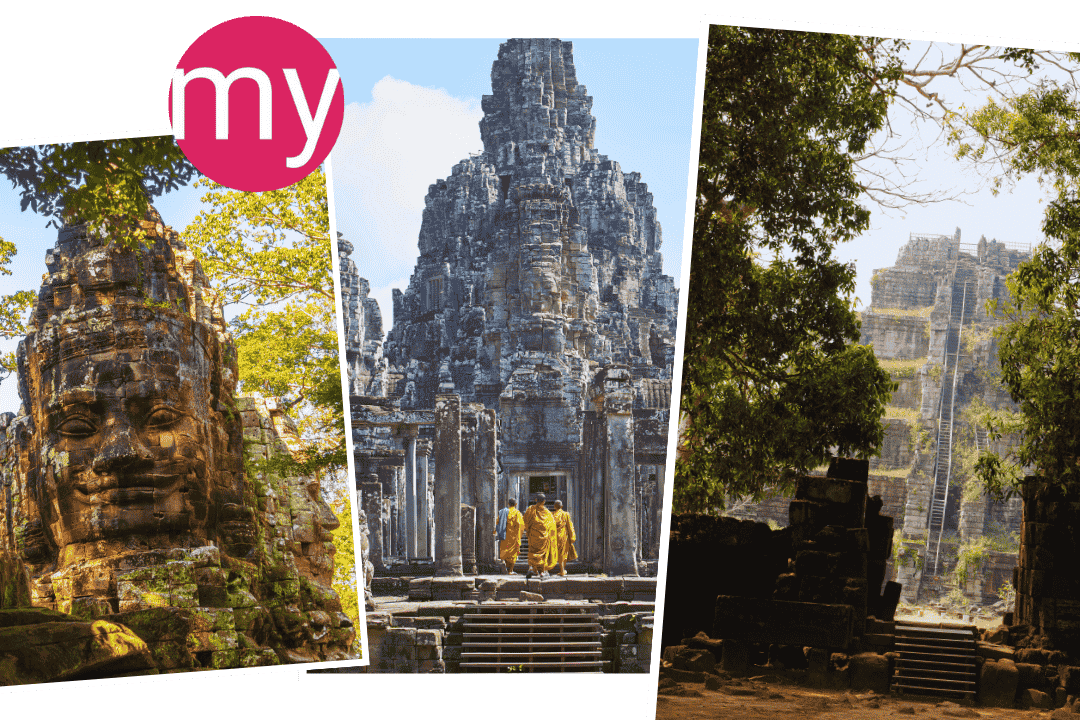
Forget the Crowds — Here’s Why Siem Reap Offers Stunning Views, Rich History, and Mind-Blowing Local Food Without the Crazy Price Tags
Siem Reap has more than just old temples.
You’ll find lively markets and real culture here. Most tourists miss the best parts of this amazing city.
Key Takeaways:
- The Angkor Ticket Office is the only legal place to buy passes
- Four ways to buy tickets: in person, online, at kiosks, or through the mobile app
- Three ticket options: 1-day ($37), 3-day ($62), and 7-day ($72)
- Located 4 km from Siem Reap town on Road 60
- Open daily from 5:00 AM to 5:30 PM
- Buy tickets after 5:00 PM to see sunset and have a full day tomorrow
- Keep your ticket with you – fines up to $300 for lost tickets
11 Reasons Siem Reap Deserves Your Attention Right Now
See Why This Cambodian City Will Be Your Next Favorite Place
1. It’s Home to the Breathtaking Angkor Wat Complex
Angkor Wat isn’t just another old building – it’s the largest religious monument in the world. This huge Cambodian temple complex covers over 400 square kilometers. Most people only see the main areas, but with a good guide, you can find spots where few tourists go. The Private Angkor Wat Sunrise Tour helps you avoid crowds and see the temples in soft morning light. For a different view, try the Angkor Wat Sunset Tour when the stones turn golden at day’s end.
Did you know? Angkor Wat’s name means “Temple City” in Khmer. It was built in the early 12th century by King Suryavarman II as a Hindu temple, then turned into a Buddhist temple later. The five towers stand for the five peaks of Mount Meru, home of the gods in Hindu faith.
2. The Angkor Archaeological Park Goes Way Beyond Just Angkor Wat
The Angkor Archaeological Park holds over 1,000 temples from the mighty Khmer Empire. Angkor Thom, the last great capital city, spans 9 square kilometers with walls 8 meters high. Inside sits the Bayon Temple with 216 huge stone faces watching from every angle. The Early Bird Ta Prohm Tour takes you to the famous “Tomb Raider temple” when most tourists are still asleep.
The facts: The Khmer Empire ruled much of Southeast Asia from the 9th to 15th centuries. It had over one million people living in Angkor when London had just 50,000. The city had a complex water system with canals, pools, and dams that helped grow enough rice for millions.
3. Tonlé Sap Lake Shows a Completely Different Way of Life
Just a short drive from town, Tonlé Sap Lake hosts amazing floating villages where life happens totally on water. Houses, schools, shops, and even churches float on this huge lake that grows six times bigger during rainy season! The Angkor Wat to Siem Reap Floating Village tour mixes temple visits with a boat trip through these water towns.
Amazing lake facts: Tonlé Sap is the largest freshwater lake in Southeast Asia. It has a unique flow – for part of the year, it flows into the Mekong River. Then during rainy season, the Mekong gets so full that the water flows backward into the lake! This makes the lake grow from 2,700 square kilometers to 16,000 square kilometers each year.
4. Pub Street Comes Alive After Dark
When night falls, Pub Street lights up with bright signs, cheap drinks, and food stalls selling everything from fried ice cream to grilled crocodile. Street food costs just a few dollars here, and you can try real Cambodian cuisine without spending much money. The street gets busy by 7 PM, and most places stay open until at least midnight.
Food tip: Try fish amok, Cambodia’s national dish. It’s fish cooked in coconut milk with lemongrass, turmeric, and other spices, wrapped in banana leaf. You’ll find it at most restaurants on and around Pub Street for $3-5.
5. The Apsara Dance Shows Cambodia’s Rich Cultural History
These graceful dancers tell stories with their fingers, toes, and eyes. The Apsara dance almost died out during the Khmer Rouge time, but a few dancers who lived taught a new generation. You can see shows at many restaurants, but the Cambodian Cultural Village offers the most authentic performances.
Cultural note: Apsaras are heavenly dancers in Hindu and Buddhist mythology. You’ll see them carved on temple walls at Angkor. The dance moves haven’t changed much in 1,000 years – the hand positions alone have 1,500 different meanings!
Editor’s Note:I came to Siem Reap 15 years ago to see Angkor Wat. I never left. What kept me here? The temples amaze me still, but the smiling faces, yummy street food, and calm river walks stole my heart. Big cities like Bangkok get packed with tourists each year. Siem Reap stays true to itself. We’d love to show you our home while it’s still this way.
6. The Angkor National Museum Fills in the Historical Blanks
Before seeing the temples, spend time at the Angkor National Museum to learn the stories behind what you’ll see. With air conditioning and clear English signs, you’ll understand more about the rise and fall of the Khmer people who built Angkor. The museum has eight galleries with over 1,000 artifacts.
Museum tip: Rent the audio guide ($5) for extra details not on the signs. The Gallery of 1,000 Buddhas shows how art styles changed over the centuries.
7. Banteay Srei Will Make Your Jaw Drop
Known as the “Citadel of Women,” Banteay Srei has the most detailed stone carvings in Cambodia. Built from pink sandstone that glows in morning light, this smaller temple sits 25 km from the main Angkor group. The Banteay Srei Tour takes you to this masterpiece and other less-visited temples away from the main tourist paths.
Why it’s special: The carvings at Banteay Srei are so small and perfect that locals believed only women could have made something so fine – that’s why it’s called the “Citadel of Women.” It was built in 967 CE, earlier than most Angkor temples.
8. Phnom Kulen National Park Offers Natural Beauty and Ancient Sites
This mountain range is holy to Cambodians as the birthplace of the Khmer Empire. You can swim under waterfalls, see a giant Buddha carved from one boulder, and find thousands of small carvings in the riverbed. The park sits 50 km from Siem Reap and makes a great day trip.
History fact: In 802 CE, King Jayavarman II stood on Phnom Kulen and declared himself a “god-king,” starting the Khmer Empire. The mountain still has many sacred sites, and Cambodians make pilgrimages here.
9. Artisans Angkor Keeps Traditional Crafts Alive
This social business trains young Cambodians in old arts like stone carving, silk weaving, and lacquer work. You can tour their workshops to see artists at work and buy good-quality souvenirs that directly help local craftspeople. They employ over 800 artisans from rural areas.
Shopping tip: The silk scarves make great gifts and pack easily in luggage. Each one takes days to make by hand, and you can see the whole process from silkworm to finished product at their silk farm outside town.
10. The War Museum Cambodia Tells Hard But Important Stories
Cambodia’s recent past includes terrible suffering, and this museum helps explain what happened during the civil war and Khmer Rouge time. The guides are often war veterans who share personal stories that make history real in powerful ways.
Historical context: Between 1975 and 1979, the Khmer Rouge killed about 2 million Cambodians – almost a quarter of the country’s people. Siem Reap, like the rest of Cambodia, lost many people and much knowledge. The country’s recovery makes today’s tourism growth even more amazing.
11. Temples Like Preah Khan and Beng Mealea Offer Real Adventures
While crowds fill the main temples, places like Preah Khan give you space to explore without many other people. Even better is Beng Mealea, a temple that jungle is slowly taking back. The Beng Mealea Tour takes you on wooden walkways through a temple that feels truly forgotten.
Explorer’s note: Beng Mealea sits 40 km east of the main Angkor group and follows the same floor plan as Angkor Wat. But unlike the well-kept main temples, Beng Mealea stays partly fallen, with huge stone blocks scattered like toys and trees growing through walls. It gives a sense of what Angkor looked like when French explorers first found it.
Siem Reap Offers Amazing Markets Without Bangkok’s Chaos
The Siem Reap Night Market and Old Market Siem Reap give you all the fun of shopping in Southeast Asia without too many crowds. Prices start high but friendly bargaining is expected – try for about half of the first price. The night market has great gifts like shadow puppets, items made from old bombs and bullets, and handmade soaps.
Shopping areas: The Old Market (Psah Chas) stays open from early morning until about 6 PM and sells everything from fresh food to clothes. The Night Market area actually has several different markets – Angkor Night Market was the first, but now there’s also the Art Center Night Market, Noon Night Market, and more, all within walking distance of each other.
Cambodia’s Tourism Comeback Makes Now the Perfect Time to Visit
Tourism in Siem Reap grows fast but hasn’t yet returned to pre-pandemic crowds. The city welcomed over 3 million visitors in early 2023 – 308% more than 2022 – but still less than before COVID-19. The government just spent $150 million to improve roads, add bike lanes, and update the city while keeping its charm. This means better trips for you without the shoulder-to-shoulder crowds at famous Cambodian temples.
By the numbers: Before COVID, Siem Reap had 2.2 million foreign and 2 million domestic visitors in 2019. The pandemic cut foreign visitors by 77% and domestic visitors by 25%, leaving just 45,000 visitors in 2020. The government now aims for 10.9 million domestic visitors and 7.5 million international arrivals by 2025, which would bring about $6 billion in new money to the country.
The $150 Million Makeover Makes Travel Easier Than Ever
The recent $150 million update to Siem Reap has made big changes that help tourists. Workers widened roads, built new highways, added fast internet, and created bike lanes along the river. The city looks better but still keeps its small-town feel that makes it special.
Smart planning: Unlike some places that lose their soul to tourism, Siem Reap keeps its charm even with more visitors. The city balances growth with keeping its character. You can still find peaceful riverside walks, colorful local temples, and lively markets where regular Cambodian life goes on alongside tourism.
Quality Tourism: Cambodia’s New Approach to Siem Reap
Cambodia now focuses on “quality tourism” for Siem Reap instead of just bringing in as many people as possible. This new plan aims to triple international tourist visits over 15 years, use tourism money to help rural areas grow, make sure rural towns share in tourism wealth, and protect nature and old buildings.
What this means for you: Better-trained guides, less-crowded sites if you know when to go, and more real cultural experiences rather than just quick temple tours. The focus on spreading tourism benefits means you can now find good tours to smaller towns and natural areas around Siem Reap too.
The Best Way to See Siem Reap Attractions is With Local Experts
While you can visit most places by yourself, local guides make everything better. They know when to avoid crowds, which temples match what you like, and can explain the history and symbols that make these places special. The official Angkor Enterprise website gives information about tickets and rules, while My Siem Reap Tours offers private guides who know all the secret spots.
Ticket info: Passes to the Angkor parks come as 1-day ($37), 3-day ($62), or 7-day ($72) options. The 3-day pass doesn’t have to be used on consecutive days – you can spread your visits out over a week, which helps avoid temple burnout.
Siem Reap Through the Seasons: When to Visit
Siem Reap has different seasons that change your visit:
- November to February: Cool and dry with the best weather but more tourists
- March to May: Hot and dry with temperatures over 95°F (35°C) but fewer people
- June to October: Rainy season makes everything green and beautiful. Rain usually comes in short afternoon storms, not all-day downpours
Smart timing: May through September sees fewer international tourists and sometimes lower prices. October through April brings more diverse international visitors. Khmer New Year (usually in April) brings lots of domestic tourists, with more than 370,000 people visiting during this time in 2019.
Plan Your Trip to Siem Reap Now
Siem Reap surprises most visitors with how much there is beyond the famous temples. Stay at least 4-5 days to see both the must-visit spots and the quieter places that show real Cambodian life. The city has hotels for every budget, from $15 rooms to $2,000 fancy suites, and food that’s both cheap and amazing.
10 Key Takeaways Before You Visit Siem Reap
1. Plan for at least 5 days, not just a quick temple trip
Most tourists make a big mistake by staying only 2-3 days in Siem Reap. This isn’t enough time! You need at least one full day for the main Angkor temples, another for Banteay Srei and outlying temples, a day for Tonlé Sap Lake, and time to enjoy the markets and food scene. Bangkok and Singapore might be flashier, but Siem Reap gives you better value and fewer crowds.
2. The $150 million update makes Siem Reap better than ever
The roads are now smooth and wide. You’ll find new bike paths along the river. The internet works great everywhere. Some streets turned into walking zones with no cars. They fixed all this without ruining the small-town feel that makes Siem Reap special. Other Southeast Asian cities like Bagan in Myanmar or Luang Prabang in Laos haven’t yet made these kinds of smart updates.
3. Skip the middle of the day at temples
The sun in Cambodia gets really hot from 11 AM to 3 PM. Smart visitors see temples early morning or late afternoon. This isn’t just for comfort – the light is much better for photos at these times, and the crowds are smaller too. Unlike Thai temples that often have shade, Angkor temples can be brutally hot in midday sun.
4. Bring cash, but you can use US dollars everywhere
Cambodia has a funny money system. They use their own currency (riel) for small stuff, but US dollars work for everything else. ATMs give US dollars, and you don’t need to change money. This makes shopping easy for Americans, unlike Thailand or Vietnam where you must change to local money first.
5. Try the food beyond just amok
Fish amok is great, but don’t miss lok lak (stir-fried beef), nom banh chok (breakfast noodles), and kuy teav (pork soup). Cambodian food uses less spice than Thai food but has more fresh herbs than Vietnamese food. The night markets have cheap eats, while restaurants like Cuisine Wat Damnak mix Cambodian and French cooking in amazing ways.
6. The rainy season isn’t as bad as people think
Many skip Cambodia during rainy season (June-October), but this is a mistake. It rarely rains all day – usually just hard for an hour in the afternoon. The temples look amazing with water in their moats, everything turns green, and you’ll find way fewer tourists. The prices drop by 30-50% during these months too!
7. The Khmer Rouge history needs respect
Between 1975-1979, Cambodia went through a terrible time when about 2 million people died. Tourists sometimes make jokes about this period, which is very wrong. Cambodians show amazing strength in moving forward, but many people you meet lost family members. The War Museum helps explain this part of history.
8. Support places that help the community
Some tours and shops in Siem Reap give back to local people. Places like Artisans Angkor train young people in traditional arts. Restaurants like Haven and Spoons train at-risk youth in cooking and serving. Shops like Made in Cambodia Market sell only items made in the country, not stuff brought in from China like many other market stalls.
9. Bargain at markets, but stay friendly
Prices at markets start high for tourists. You should offer about half of the first price. But always keep a smile and be ready to walk away if the price stays too high. Getting mad never works. Unlike Hanoi or Bangkok where bargaining can get tense, Siem Reap vendors tend to be more laid-back and friendly.
10. Use a tour guide with temple knowledge
Temples look nice in photos, but they make so much more sense when someone explains the stories carved on the walls. Good guides cost $25-45 per day but turn stone buildings into living history. They also know when to visit each temple to avoid big tour groups. Cambodian guides speak better English than guides in many nearby countries.
Ready to see one of Asia’s most underrated places?
Siem Reap surprises most visitors with how much there is beyond the famous temples.
Plan at least 4-5 days to see both the must-visit spots and the quieter places that show real Cambodian life.
The city has hotels for every budget, from $15 rooms to $2,000 luxury suites, and food that’s both cheap and amazing.
The temples have stood for 900 years – they’ll wait for you, but why should you wait any longer? Contact My Siem Reap Tours to plan your perfect Cambodia trip today!
Brought to you by Dan and Mat, Your tour planners.
Featured
Explore more on My Siem Reap Tours
Koh Ker and Beng Mealea guided tour | Banteay Srei temple guided tour | Angkor Wat Sunrise tour | Private Angkor Wat Sunset Tour | Koh Ker and Beng Mealea guided tour | Morning Siem Reap floating village tour | Afternoon Siem Reap floating village tour | Private Angkor Wat special tour | Kulen Waterfall small group guided Tour | Private Angkor Wat mix temples photo tour
